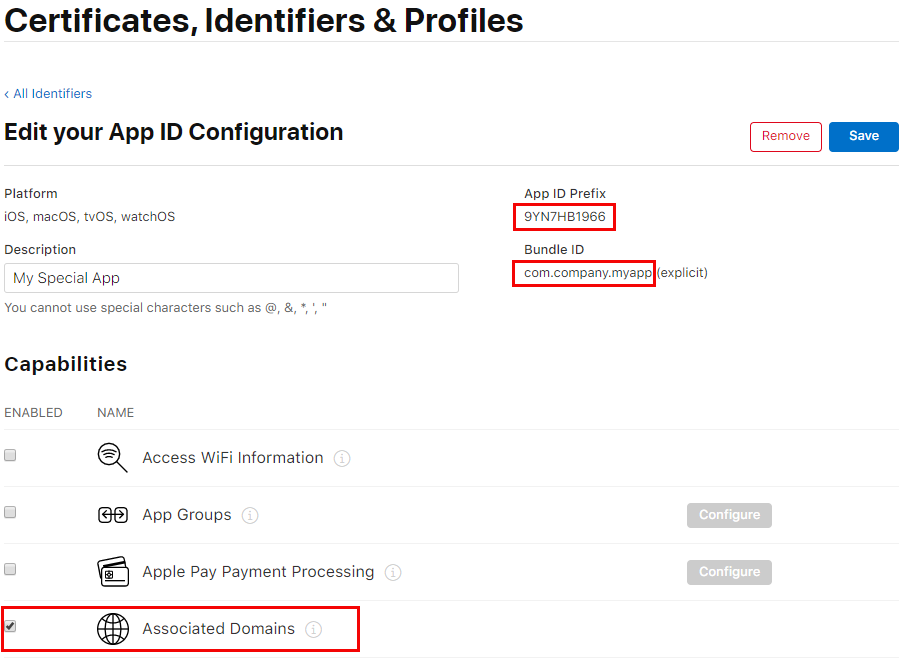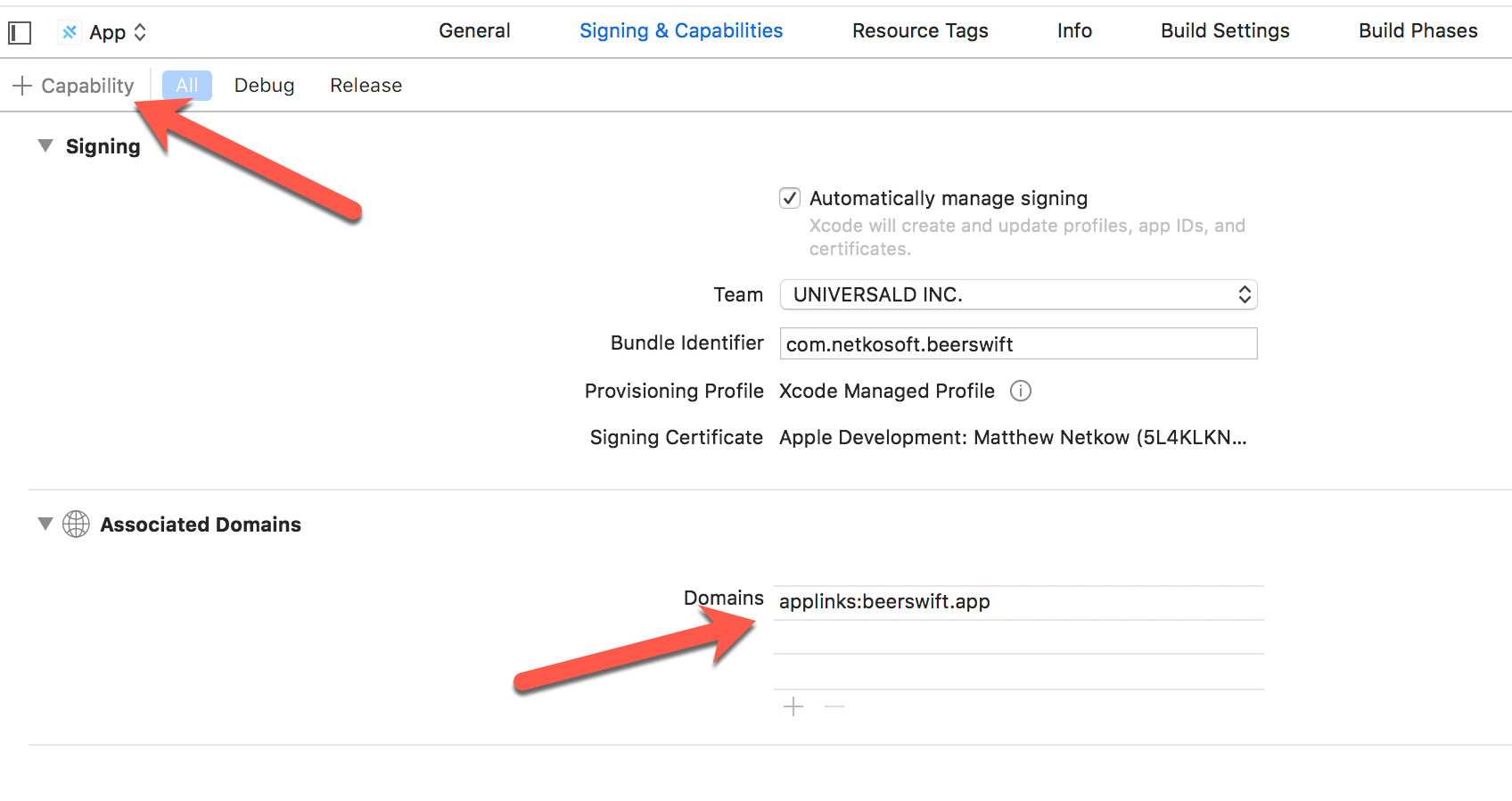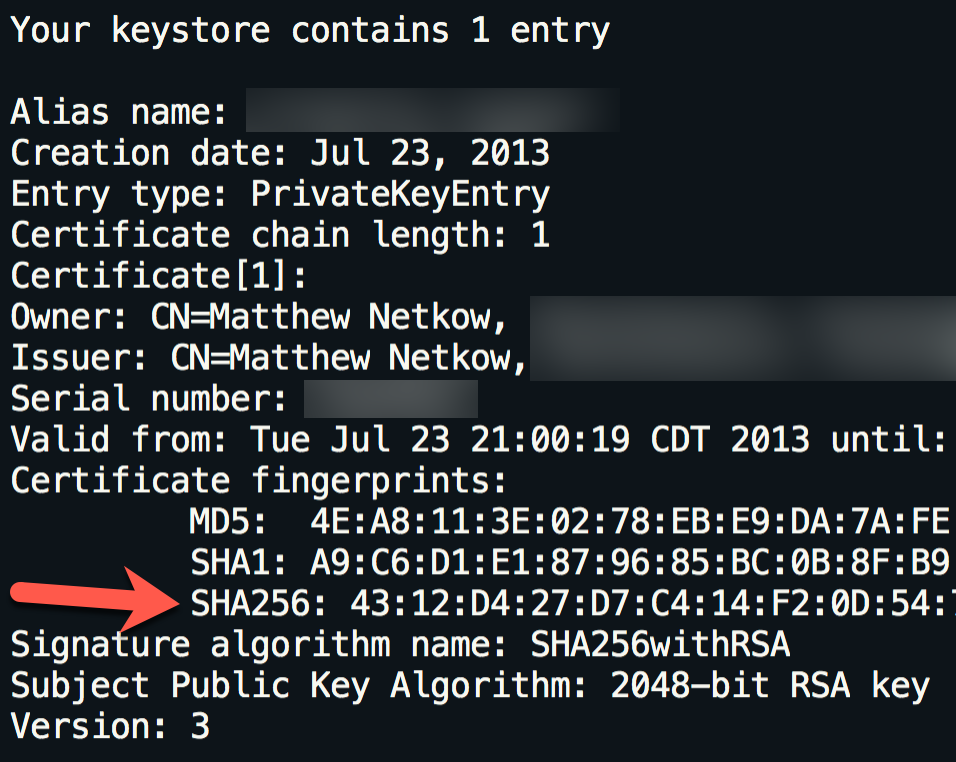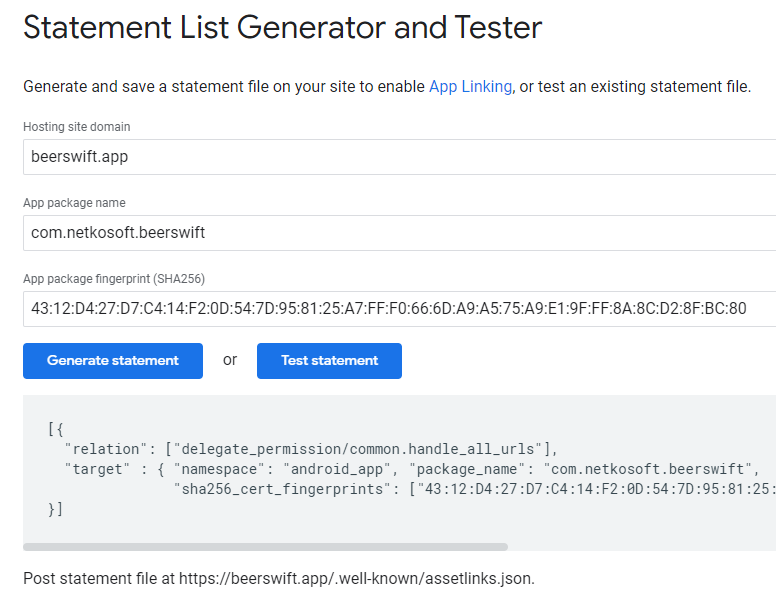使用Universal Links和App Links实现深度链接
支持平台:iOS、Android
通用链接(Universal Links,iOS)和应用链接(App Links,Android)能够让用户直接跳转到原生应用内的特定内容(通常称为深度链接)。
当用户点击深度链接时,系统会直接将用户带到您的应用中,无需先通过设备浏览器或网站进行路由。如果应用未安装,则会引导用户访问网站。这种机制使得深度链接成为跨平台应用(同时构建网页版、iOS和Android版)的理想功能:既提供无缝的移动体验,又能优雅地回退到网页版。
优势:
- 安全性:使用您拥有域名的HTTPS链接,确保其他应用无法冒用您的链接
- 无缝体验:单一URL同时适配网站和应用,确保用户能准确访问目标内容
- 提升参与度:支持从邮件客户端、搜索引擎结果等多种场景打开链接
演示视频
以下是实际效果演示。示例中用户已安装原生应用,通过点击邮件中的链接直接进入应用。首先是根链接(https://beerswift.app)跳转到应用主页,接着深度链接(https://beerswift.app/tabs/tab3)跳转到Tab3页面。
准备工作
- 已完成配置的Capacitor应用
- iOS需加入Apple开发者计划
本文将以https://beerswift.app作为示例网址。
使用Capacitor App API实现深度链接路由
当用户点击深度链接打开应用时,移动操作系统不会自动知道如何路由。需要在应用启动时使用Capacitor的App API来实现路由逻辑。
如果您的网站和应用路径不一致,需要实现更复杂的URL模式匹配(可参考本指南)。如果移动应用和网页应用使用相同代码库,实现则非常简单——只需重定向到相同URL。以下示例基于后者。
Angular实现
路由逻辑应放在app.component.ts中。首先导入Angular的NgZone和Router,以及Capacitor的App:
import { Component, NgZone } from '@angular/core';
import { Router } from '@angular/router';
import { App, URLOpenListenerEvent } from '@capacitor/app';
然后在构造函数中注入Router和NgZone:
constructor(private router: Router, private zone: NgZone) {
this.initializeApp();
}
最后监听appUrlOpen事件,发现深度链接时进行重定向:
initializeApp() {
App.addListener('appUrlOpen', (event: URLOpenListenerEvent) => {
this.zone.run(() => {
// 示例URL:https://beerswift.app/tabs/tab2
// slug = /tabs/tab2
const slug = event.url.split(".app").pop();
if (slug) {
this.router.navigateByUrl(slug);
}
// 若无匹配项则不处理,交由常规路由逻辑
});
});
}
React实现
React有多种实现方式。一种方法是将App API监听功能封装为新组件,然后添加到App.tsx中。首先创建AppUrlListener.tsx并导入React Router的useHistory钩子和Capacitor App API:
import React, { useEffect } from 'react';
import { useHistory } from 'react-router-dom';
import { App, URLOpenListenerEvent } from '@capacitor/app';
定义AppUrlListener组件,监听appUrlOpen事件并处理重定向:
const AppUrlListener: React.FC<any> = () => {
let history = useHistory();
useEffect(() => {
App.addListener('appUrlOpen', (event: URLOpenListenerEvent) => {
// 示例URL:https://beerswift.app/tabs/tab2
// slug = /tabs/tab2
const slug = event.url.split('.app').pop();
if (slug) {
history.push(slug);
}
// 若无匹配项则不处理
});
}, []);
return null;
};
export default AppUrlListener;
在App.tsx中导入该组件:
import AppUrlListener from './pages/AppUrlListener';
将其添加到IonReactRouter内(确保History钩子可用):
const App: React.FC = () => {
return (
<IonApp>
<IonReactRouter>
<AppUrlListener></AppUrlListener>
<IonRouterOutlet>
<Route path="/home" component={Home} exact={true} />
<Route exact path="/" render={() => <Redirect to="/home" />} />
</IonRouterOutlet>
</IonReactRouter>
</IonApp>
);
};
Vue实现
Vue使用原生集成的Vue Router实现路由。在路由配置文件(通常为routes.js)中:
首先导入Capacitor的App以及Vue和VueRouter:
import { App, URLOpenListenerEvent } from '@capacitor/app';
import Vue from 'vue';
import VueRouter from 'vue-router';
配置Vue Router路由(详见Vue Router入门指南):
const router = new VueRouter({
routes: [],
});
建议使用mode: history以避免处理#符号。
注册Vue Router:
const VueApp = new Vue({
router,
}).$mount('#app');
最后添加深度链接监听:
App.addListener('appUrlOpen', function (event: URLOpenListenerEvent) {
// 示例URL:https://beerswift.app/tabs/tabs2
// slug = /tabs/tabs2
const slug = event.url.split('.app').pop();
if (slug) {
router.push({
path: slug,
});
}
});
创建网站关联文件
为了让Apple和Google允许深度链接打开应用,需要在网站.well-known目录下创建关联文件(如https://beerswift.app/.well-known/)。
继续阅读iOS和Android的具体配置说明。
iOS配置
iOS配置包括创建网站关联文件和在原生应用中注册域名。
必须加入Apple开发者计划。
创建网站关联文件
登录Apple开发者网站,进入"Certificates, Identifiers, & Profiles"部分,选择应用标识符。记下Team ID和Bundle ID,在Capabilities中启用"Associated Domains":

创建apple-app-site-association文件(注意:虽然是JSON文件,但不要加扩展名)。
示例内容(替换TEAMID.BUNDLEID为您自己的ID):
{
"applinks": {
"apps": [],
"details": [
{
"appID": "TEAMID.BUNDLEID",
"paths": ["*"]
}
]
}
}
将文件上传到HTTPS网站,使用Apple的验证工具检查配置。URL格式应为:https://beerswift.app/.well-known/apple-app-site-association
添加关联域
在Xcode中打开项目,进入Signing & Capabilities,点击"+ Capability"添加Associated Domains。按格式applinks:yourdomain.com添加域名:

Android配置
Android配置包括创建网站关联文件和配置应用链接的intent过滤器。
创建网站关联文件
需要提供Android证书的SHA256指纹。若无证书,先创建:
keytool -genkey -v -keystore KEY-NAME.keystore -alias ALIAS -keyalg RSA -keysize 2048 -validity 10000
使用keytool查看证书指纹:
keytool -list -v -keystore my-release-key.keystore
在输出中查找SHA256指纹:

使用Google的Asset Links工具生成网站关联文件,填写网站域名、应用包名和SHA256指纹:

生成的JSON保存为.well-known/assetlinks.json:
[
{
"relation": ["delegate_permission/common.handle_all_urls"],
"target": {
"namespace": "android_app",
"package_name": "com.netkosoft.beerswift",
"sha256_cert_fingerprints": ["43:12:D4:27:D7:C4:14..."]
}
}
]
上传文件后点击"Test statement"验证配置。
添加Intent过滤器
在AndroidManifest.xml的<activity>元素内添加intent过滤器:
<intent-filter android:autoVerify="true">
<action android:name="android.intent.action.VIEW" />
<category android:name="android.intent.category.DEFAULT" />
<category android:name="android.intent.category.BROWSABLE" />
<data android:scheme="https" android:host="beerswift.app" />
</intent-filter>
完整Activity配置示例:
<activity
android:configChanges="orientation|keyboardHidden|keyboard|screenSize|locale"
android:name="com.netkosoft.beerswift.MainActivity"
android:label="@string/title_activity_main"
android:theme="@style/AppTheme.NoActionBarLaunch"
android:launchMode="singleTask">
<intent-filter>
<action android:name="android.intent.action.MAIN" />
<category android:name="android.intent.category.LAUNCHER" />
</intent-filter>
<intent-filter android:autoVerify="true">
<action android:name="android.intent.action.VIEW" />
<category android:name="android.intent.category.DEFAULT" />
<category android:name="android.intent.category.BROWSABLE" />
<data android:scheme="https" android:host="beerswift.app" />
</intent-filter>
</activity>
网站配置
不同技术栈的网站配置方式不同,以下是常见方案:
Angular
将关联文件放在src/.well-known目录,在angular.json的assets配置中添加:
{
"glob": "**/*",
"input": "src/.well-known",
"output": ".well-known/"
}
构建后部署。
NuxtJS
将文件放在static/.well-known目录,直接构建部署即可。
React
将文件放在public/.well-known目录,无需额外配置。
WordPress
参考此指南。
验证
网站托管关联文件后即可验证(无需发布应用到商店)。连接设备部署测试版应用,点击网站链接测试是否能正确跳转。